launch方法的代码如下:
// CoroutineScope的扩展方法
public fun CoroutineScope.launch(
context: CoroutineContext = EmptyCoroutineContext,
start: CoroutineStart = CoroutineStart.DEFAULT,
block: suspend CoroutineScope.() -> Unit
): Job {
// 根据当前上下文,计算得到新的上下文
val newContext = newCoroutineContext(context)
// 根据启动模式,创建不同的续体
val coroutine = if (start.isLazy)
LazyStandaloneCoroutine(newContext, block) else
StandaloneCoroutine(newContext, active = true)
// 启动协程
coroutine.start(start, coroutine, block)
return coroutine
}
newCoroutineContext用于计算新的上下文,代码如下:
public actual fun CoroutineScope.newCoroutineContext(context: CoroutineContext): CoroutineContext {
// coroutineContext为CoroutineScope中保存的全局变量
// 对上下文进行相加
val combined = coroutineContext + context
// 用于debug
val debug = if (DEBUG) combined + CoroutineId(COROUTINE_ID.incrementAndGet()) else combined
// 如果上下文中没有调度器,则添加一个默认的调度器
return if (combined !== Dispatchers.Default && combined[ContinuationInterceptor] == null)
debug + Dispatchers.Default else debug
}
在不指定协程启动模式的情况下,协程将按照DEFAULT模式启动,在上述代码中,会调用StandaloneCoroutine对象的start方法。StandaloneCoroutine的代码如下:
private open class StandaloneCoroutine(
parentContext: CoroutineContext,
active: Boolean
) : AbstractCoroutine<Unit>(parentContext, active) {
override fun handleJobException(exception: Throwable): Boolean {
handleCoroutineException(context, exception)
return true
}
}
StandaloneCoroutine类中仅重写了handleJobException方法,用于处理父协程不处理的异常。因此这里调用的start方法实际是父类AbstractCoroutine的方法,AbstractCoroutine类的start方法代码如下:
public fun <R> start(start: CoroutineStart, receiver: R, block: suspend R.() -> T) {
// 该方法用于完成父协程与子协程的绑定关联,同时确保父协程启动
initParentJob()
// 该方法的写法等同于start.invoke(block, receiver, this)
// 因此调用的CoroutineStart类的方法
start(block, receiver, this)
}
AbstractCoroutine类的start方法内,调用了CoroutineStart类的invoke方法。
CoroutineStart是一个枚举类,用于根据不同的启动模式去启动协程,代码如下:
public enum class CoroutineStart {
// 四种启动模式
DEFAULT,
LAZY,
// 具有实验性,慎用
@ExperimentalCoroutinesApi
ATOMIC,
// 具有实验性,慎用
@ExperimentalCoroutinesApi
UNDISPATCHED;
// 根据不同的启动策略,启动协程,执行block
@InternalCoroutinesApi
public operator fun <T> invoke(block: suspend () -> T, completion: Continuation<T>): Unit =
when (this) {
DEFAULT -> block.startCoroutineCancellable(completion)
ATOMIC -> block.startCoroutine(completion)
UNDISPATCHED -> block.startCoroutineUndispatched(completion)
LAZY -> Unit // 该模式不主动启动,等待用户调用start方法
}
// 根据不同的启动策略,启动协程,执行block
@InternalCoroutinesApi
public operator fun <R, T> invoke(block: suspend R.() -> T, receiver: R, completion: Continuation<T>): Unit =
when (this) {
DEFAULT -> block.startCoroutineCancellable(receiver, completion)
ATOMIC -> block.startCoroutine(receiver, completion)
UNDISPATCHED -> block.startCoroutineUndispatched(receiver, completion)
LAZY -> Unit
}
// 当前的启动模式是否为懒启动
@InternalCoroutinesApi
public val isLazy: Boolean get() = this === LAZY
}
CoroutineStart类中有两个invoke方法,其中一个参数中有receiver,另一个没有receiver。在Kotlin协程中,很多方法都重载了带有receiver的方法和不带有receiver的方法。
receiver用于为block执行提供一个环境。Kotlin中提供的启动协程的方法都是通过带receiver参数的start方法实现。通过receiver环境,可以更方便的实现一些操作,比如在launch启动的协程中再次调用launch启动新的协程。在没有receiver的环境下执行block,则更像是在suspend方法中执行,如果需要启动其他的协程,需要自己提供环境。
3. startCoroutineCancellable方法
startCoroutineCancellable是一个扩展方法,用来创建一个可以取消的协程,代码如下:
internal fun <R, T> (suspend (R) -> T).startCoroutineCancellable(receiver: R, completion: Continuation<T>) =
runSafely(completion) {
// createCoroutineUnintercepted:创建协程
// intercepted:拦截调度
// resumeCancellableWith:恢复执行
createCoroutineUnintercepted(receiver, completion).intercepted().resumeCancellableWith(Result.success(Unit))
}
// 如果创建的过程发生异常,则通知续体恢复后续代码的执行
private inline fun runSafely(completion: Continuation<*>, block: () -> Unit) {
try {
block()
} catch (e: Throwable) {
completion.resumeWith(Result.failure(e))
}
}
4.createCoroutineUnintercepted方法
createCoroutineUnintercepted方法用于创建一个新的、可挂起的、不受干扰的协程。
public expect fun <R, T> (suspend R.() -> T).createCoroutineUnintercepted(
receiver: R,
completion: Continuation<T>
): Continuation<Unit>
在Kotlin中有很多被expect关键字标记的接口方法,需要找到对应平台下被actual标记的实现方法。
public actual fun <R, T> (suspend R.() -> T).createCoroutineUnintercepted(
receiver: R,
completion: Continuation<T>
): Continuation<Unit> {
// 用于debug
val probeCompletion = probeCoroutineCreated(completion)
return if (this is BaseContinuationImpl)
create(receiver, probeCompletion)
else {
createCoroutineFromSuspendFunction(probeCompletion) {
(this as Function2<R, Continuation<T>, Any?>).invoke(receiver, it)
}
}
}
createCoroutineUnintercepted方法创建的协程需要手动调用resumeWith方法才可以启动,但重复的调用resumeWith方法可能会导致状态机发生异常。同时,参数中传入的completion可能会在任意的上下文中被调用。
正常情况下,我们编写的lambda表达式——block,在编译器编译时,会自动生成一个类,并继承SuspendLambda类,实现Continuation等接口。因为SuspendLambda继承自ContinuationImpl,ContinuationImpl继承自BaseContinuationImpl,所以才有了上述代码中的判断逻辑。
如果当前的block对象的类型为BaseContinuationImpl,则调用create方法,这里的create方法是编译器生成的类里的重写方法,它的内部就是通过我们传入的参数,创建并返回根据blcok生成的类的一个实例对象。
如果当前的block对象的类型不为BaseContinuationImpl,则需要通过createCoroutineFromSuspendFunction方法创建协程。这里假设lambda表达式的类型不是BaseContinuationImpl。
5.createCoroutineFromSuspendFunction方法
该方法用于在createCoroutineUnintercepted方法中使用,当一个被suspend修饰的lambda表达式没有继承BaseContinuationImpl类时,则通过此方法创建协程。
有两种情况会调用该方法创建协程:第一种情况是lambda表达式中调用了其他的挂起方法;第二种情况是挂起方法是通过Java实现的。
createCoroutineFromSuspendFunction方法的代码如下:
private inline fun <T> createCoroutineFromSuspendFunction(
completion: Continuation<T>,
crossinline block: (Continuation<T>) -> Any?
): Continuation<Unit> {
val context = completion.context
// 如果上下文为空
return if (context === EmptyCoroutineContext)
// 创建一个受限协程
object : RestrictedContinuationImpl(completion as Continuation<Any?>) {
private var label = 0
override fun invokeSuspend(result: Result<Any?>): Any? =
when (label) {
0 -> {
label = 1
result.getOrThrow()
block(this)
}
1 -> {
label = 2
result.getOrThrow()
}
else -> error("This coroutine had already completed")
}
}
else // 不为空,则创建一个正常的协程
object : ContinuationImpl(completion as Continuation<Any?>, context) {
private var label = 0
override fun invokeSuspend(result: Result<Any?>): Any? =
when (label) {
0 -> {
label = 1
result.getOrThrow()
block(this)
}
1 -> {
label = 2
result.getOrThrow()
}
else -> error("This coroutine had already completed")
}
}
}
受限协程是指协程在运行过程中的,只能调用协程作用域中提供的挂起方法发生挂起,其他挂起方法不能调用,因为在挂起方法会对续体进行拦截,可能导致后续代码的执行变得无法预测。
典型的例子就是sequence方法,它创建的协程就是受限协程,只能通过调用yield方法或者yieldAll方法才能发生挂起。由于受限协程中不能进行协程调度,因此其上下文是空的。
这里launch方法的上下文有一个默认调度器,因此会创建一个ContinuationImpl对象。
到这里,协程完成了创建。
=========================================================================
再次回到startCoroutineCancellable方法,当调用createCoroutineUnintercepted创建好协程后,会调用intercepted方法,代码如下:
public actual fun <T> Continuation<T>.intercepted(): Continuation<T> =
(this as? ContinuationImpl)?.intercepted() ?: this
intercepted方法是Continuation接口的扩展方法,内部调用了ContinuationImpl类的intercepted方法。
internal abstract class ContinuationImpl(
completion: Continuation<Any?>?,
private val _context: CoroutineContext?
) : BaseContinuationImpl(completion) {
constructor(completion: Continuation<Any?>?) : this(completion, completion?.context)
public override val context: CoroutineContext
get() = _context!!
@Transient
private var intercepted: Continuation<Any?>? = null
// 如果没有缓存,则从上下文中获取拦截器,调用interceptContinuation进行拦截,
// 将拦截的续体保存到全局变量
public fun intercepted(): Continuation<Any?> =
intercepted
?: (context[ContinuationInterceptor]?.interceptContinuation(this) ?: this)
.also { intercepted = it }
protected override fun releaseIntercepted() {
val intercepted = intercepted
if (intercepted != null && intercepted !== this) {
context[ContinuationInterceptor]!!.releaseInterceptedContinuation(intercepted)
}
this.intercepted = CompletedContinuation // just in case
}
}
这里的ContinuationInterceptor指的就是在newCoroutineContext方法中传入的Dispatchers.Default调度器。CoroutineDispatcher类的interceptContinuation方法的代码如下:
public abstract class CoroutineDispatcher :
AbstractCoroutineContextElement(ContinuationInterceptor), ContinuationInterceptor {
...
// 将续体包裹成DispatchedContinuation,并传入当前调度器
public final override fun <T> interceptContinuation(continuation: Continuation<T>): Continuation<T> =
DispatchedContinuation(this, continuation)
...
}
再次回到startCoroutineCancellable方法,当调用intercepted方法进行拦截后,会调用resumeCancellableWith方法,代码如下:
public fun <T> Continuation<T>.resumeCancellableWith(result: Result<T>): Unit = when (this) {
is DispatchedContinuation -> resumeCancellableWith(result)
else -> resumeWith(result)
}
由于当前的Continuation对象的类型为DispatchedContinuation,因此调用DispatchedContinuation类的resumeCancellableWith方法,代码如下:
internal class DispatchedContinuation<in T>(
@JvmField val dispatcher: CoroutineDispatcher,
@JvmField val continuation: Continuation<T>
) : DispatchedTask<T>(MODE_ATOMIC_DEFAULT), CoroutineStackFrame, Continuation<T> by continuation {
...
@Suppress("NOTHING_TO_INLINE")
inline fun resumeCancellableWith(result: Result<T>) {
val state = result.toState()
// 是否进行调度
if (dispatcher.isDispatchNeeded(context)) {
_state = state
resumeMode = MODE_CANCELLABLE
// 进行调度
dispatcher.dispatch(context, this)
**自我介绍一下,小编13年上海交大毕业,曾经在小公司待过,也去过华为、OPPO等大厂,18年进入阿里一直到现在。**
**深知大多数Android工程师,想要提升技能,往往是自己摸索成长或者是报班学习,但对于培训机构动则几千的学费,着实压力不小。自己不成体系的自学效果低效又漫长,而且极易碰到天花板技术停滞不前!**
**因此收集整理了一份《2024年Android移动开发全套学习资料》,初衷也很简单,就是希望能够帮助到想自学提升又不知道该从何学起的朋友,同时减轻大家的负担。**
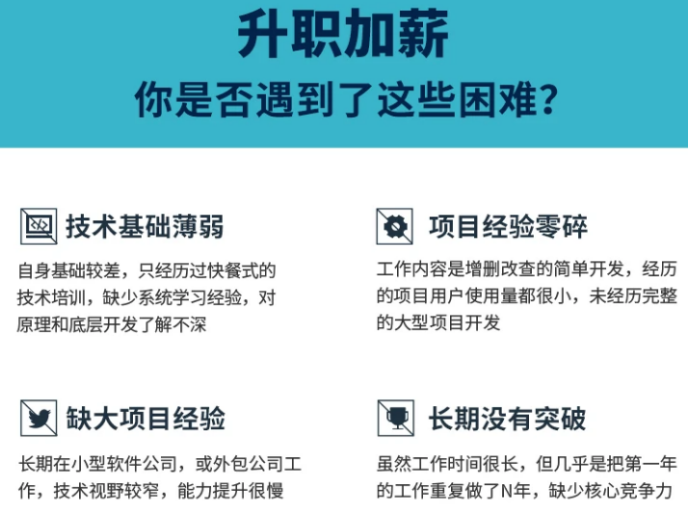

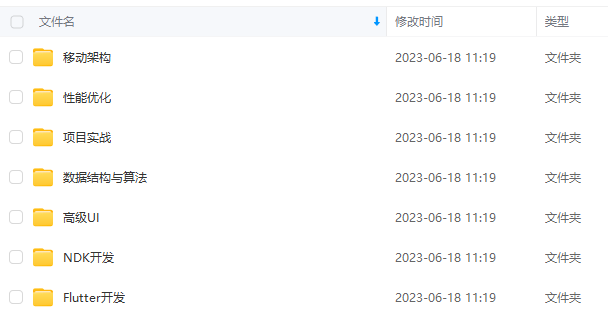
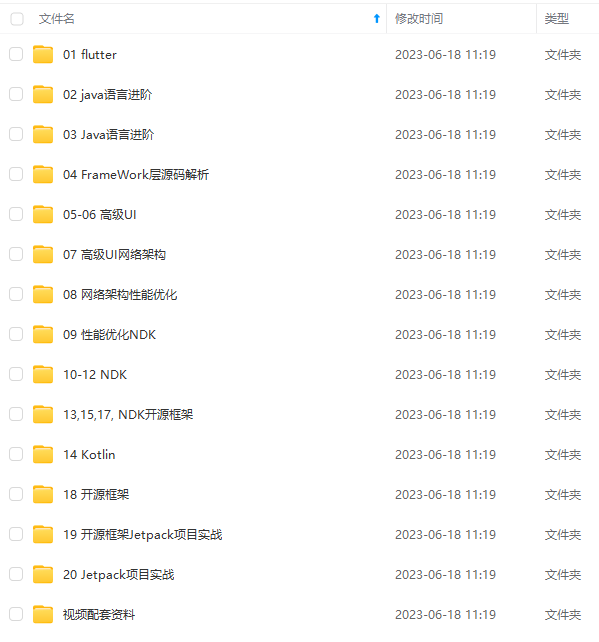
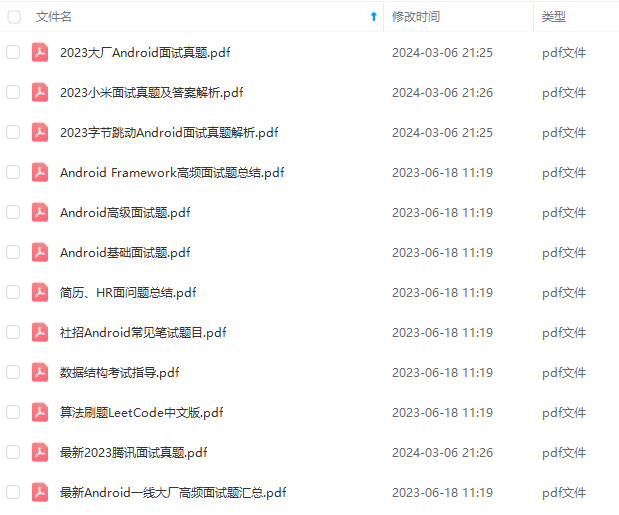

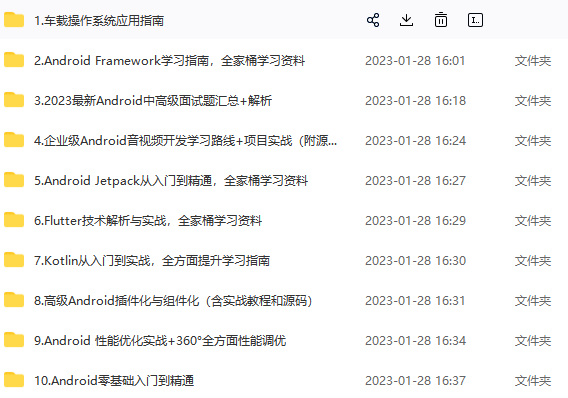
**既有适合小白学习的零基础资料,也有适合3年以上经验的小伙伴深入学习提升的进阶课程,基本涵盖了95%以上Android开发知识点,真正体系化!**
**由于文件比较大,这里只是将部分目录大纲截图出来,每个节点里面都包含大厂面经、学习笔记、源码讲义、实战项目、讲解视频,并且后续会持续更新**
**如果你觉得这些内容对你有帮助,可以添加V获取:vip204888 (备注Android)**

### 题外话
我们见过很多技术leader在面试的时候,遇到处于迷茫期的大龄程序员,比面试官年龄都大。这些人有一些共同特征:可能工作了7、8年,还是每天重复给业务部门写代码,工作内容的重复性比较高,没有什么技术含量的工作。问到这些人的职业规划时,他们也没有太多想法。
其实30岁到40岁是一个人职业发展的黄金阶段,一定要在业务范围内的扩张,技术广度和深度提升上有自己的计划,才有助于在职业发展上有持续的发展路径,而不至于停滞不前。
不断奔跑,你就知道学习的意义所在!
> **注意:我们之前因为秋招收集的二十套一二线互联网公司Android面试真题(含BAT、小米、华为、美团、滴滴)和我自己整理Android复习笔记(包含Android基础知识点、Android扩展知识点、Android源码解析、设计模式汇总、Gradle知识点、常见算法题汇总。)**

> **本文已被[CODING开源项目:《Android学习笔记总结+移动架构视频+大厂面试真题+项目实战源码》]( )收录**
[**一个人可以走的很快,但一群人才能走的更远。如果你从事以下工作或对以下感兴趣,欢迎戳这里加入程序员的圈子,让我们一起学习成长!**](https://bbs.csdn.net/forums/4304bb5a486d4c3ab8389e65ecb71ac0)
**AI人工智能、Android移动开发、AIGC大模型、C C#、Go语言、Java、Linux运维、云计算、MySQL、PMP、网络安全、Python爬虫、UE5、UI设计、Unity3D、Web前端开发、产品经理、车载开发、大数据、鸿蒙、计算机网络、嵌入式物联网、软件测试、数据结构与算法、音视频开发、Flutter、IOS开发、PHP开发、.NET、安卓逆向、云计算**
复性比较高,没有什么技术含量的工作。问到这些人的职业规划时,他们也没有太多想法。
其实30岁到40岁是一个人职业发展的黄金阶段,一定要在业务范围内的扩张,技术广度和深度提升上有自己的计划,才有助于在职业发展上有持续的发展路径,而不至于停滞不前。
不断奔跑,你就知道学习的意义所在!
> **注意:我们之前因为秋招收集的二十套一二线互联网公司Android面试真题(含BAT、小米、华为、美团、滴滴)和我自己整理Android复习笔记(包含Android基础知识点、Android扩展知识点、Android源码解析、设计模式汇总、Gradle知识点、常见算法题汇总。)**
[外链图片转存中...(img-0EzED0ct-1712198294733)]
> **本文已被[CODING开源项目:《Android学习笔记总结+移动架构视频+大厂面试真题+项目实战源码》]( )收录**
[**一个人可以走的很快,但一群人才能走的更远。如果你从事以下工作或对以下感兴趣,欢迎戳这里加入程序员的圈子,让我们一起学习成长!**](https://bbs.csdn.net/forums/4304bb5a486d4c3ab8389e65ecb71ac0)
**AI人工智能、Android移动开发、AIGC大模型、C C#、Go语言、Java、Linux运维、云计算、MySQL、PMP、网络安全、Python爬虫、UE5、UI设计、Unity3D、Web前端开发、产品经理、车载开发、大数据、鸿蒙、计算机网络、嵌入式物联网、软件测试、数据结构与算法、音视频开发、Flutter、IOS开发、PHP开发、.NET、安卓逆向、云计算**






















 2499
2499











 被折叠的 条评论
为什么被折叠?
被折叠的 条评论
为什么被折叠?








